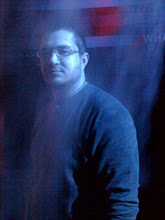I found Girl Trouble to be a remarkable film that affected me as a viewer much more than I had anticipated. I still have Girlhood to watch (both films were screened in my class - I was out of town during the Girlhood screening), so rather than compare and contrast the two films, at this point I will offer some of the reasons that I found Girl Trouble to be so compelling.
The filmmakers’ technique had a lot to do with why the film works. By spending four years following three girls caught up in the juvenile court system in California the audience experiences the journey along with the film’s subjects. Often, documentaries drop us into a situation, yet fail to inform of us of what happened before and after the actual shoot took place. By stretching the timeline of the filming process, Shanga, Stephanie, and Sheila’s journeys are more complete. The filmmakers also take care to introduce the girls and their pasts near the beginning of the film, and end with an epilogue explaining what happened to each young woman post production.
I also found the choice of focusing on young women working in the “center” to be effective, because Lateefah serves as both a constant presence (if not always onscreen) and something of a narrator throughout the film. While the girls grow up and go through experiences both good and bad, Lateefah serves as a consistent role model and cheerleader to each of them. Lateefah, and her non-profit girl’s center, were interesting subjects themselves in that they did not provide a “perfect” or clean and shiny version of rehabilitation and prevention. The center is small and seems to be underfunded, and Lateefah herself is a bit odd-looking and unpolished. News reports often focus on beautiful new youth centers represented by good-looking professional spokespeople (i.e. Oprah’s girl’s school in Africa). That the filmmakers took the time or simply decided to focus on such a place seems unique in itself.
I have seen films in the past that claim to represent the stories of multiple people or characters, yet that end up focusing only on the one or two most interesting cases. This didn’t happen in Girl Trouble. Thinking back on the film, the actual screen time each girl is afforded seems to be amazingly equal (perhaps Sheila receives a bit less time, thought she was behind bars for over a year). The editing of the film carefully considers each girls storyline, and I was never left wondering for long. In fact, I can remember thinking, “I wonder how things are going with Stephanie and her baby,” just as the film cut back to Stephanie and her baby. Also, the fact that at no time does Lateefah’s story or her overall vision for the girl’s center take over the story is a testament to how well the film focuses on closely inter-related stories without letting one dominate. At no time does the film seem to devolve into an warm and fuzzy infomercial about the success of Lateefah’s center, yet that success (and some struggles) are clearly illustrated to the viewer.
My guess is that Girl Trouble didn’t have a large theatrical release, not only due to the subject matter but also due to the limited production budget. The documentary seems to be shot primarily on video, not film, and while there is some effective usage of animation in viewing court documents, neither sound quality nor carefully constructed cinematography create what might be called a “pretty,” or aesthetically pleasing film. That being said, this film’s subject matter is strong enough that those things are not necessary needed. The audience that will ultimately see or hear about the film, however, most likely pales in comparison to that who are familiar with the slickly-produced Murderball. And while I do not personally believe documentary must always maintain an “air of sobriety” it is interesting to consider that while quadriplegic rugby and the lives of its players are certainly intriguing, and that disability awareness is important, there are far more girls, probably hundreds of thousands if not more, who are currently caught up in juvenile crime and the courts who on a daily basis face a vicious cycle of bureaucracy, domestic, and economic issues that may prevent them from becoming productive citizens of our country.
Thursday, November 12, 2009
Subscribe to:
Post Comments (Atom)

No comments:
Post a Comment